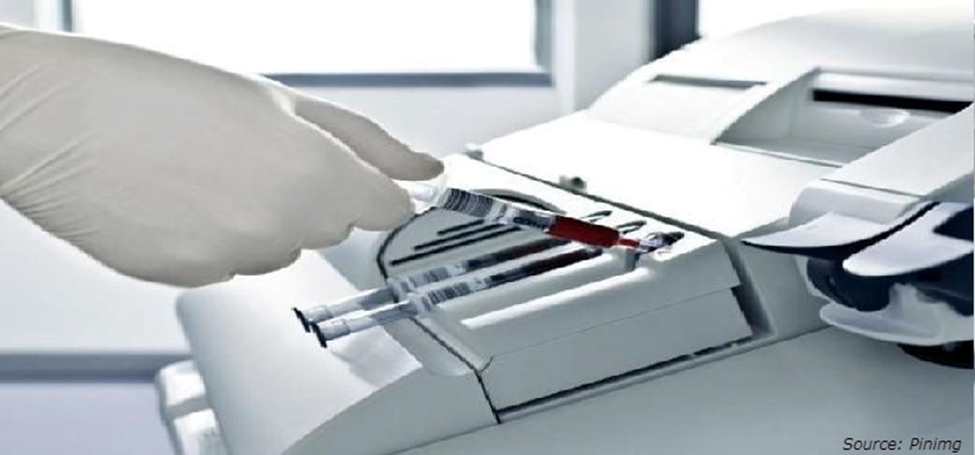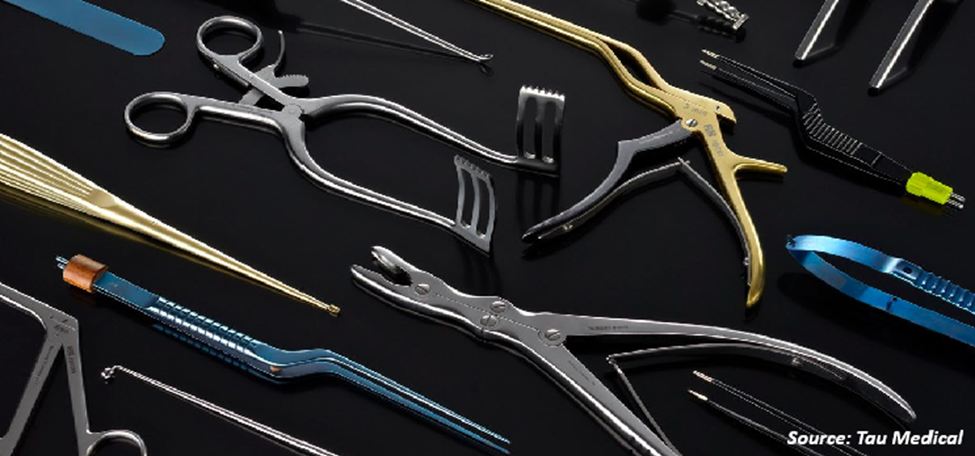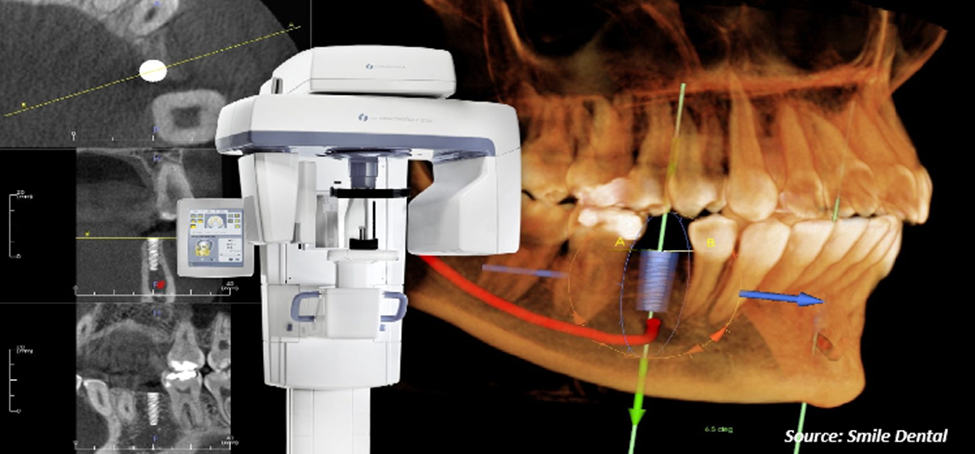Future of In-Vitro Diagnostic (IVD) Industry: Top Challenges and Emerging Opportunities
17-Sep-2024

Introduction
In-vitro diagnostics (IVD) refers to the process of performing medical tests on samples such as blood, urine, or tissues outside the body, typically in a laboratory setting. In-vitro diagnostic (IVD) industry is a vital component of the healthcare sector, which provides essential information for disease diagnosis, treatment, and monitoring. The industry encompasses a wide range of diagnostic technologies, including clinical chemistry, immunoassays, molecular diagnostics, and microbiology. IVD tests are used to diagnose a range of conditions, including infectious diseases, cancer, and genetic disorders.
The IVD industry is constantly evolving, with new technologies and advancements in testing methods driving innovation and growth. It plays a crucial role in ensuring accurate and timely diagnosis, enabling healthcare professionals to provide appropriate treatment and improve patient outcomes.
Main Challenges of In Vitro Diagnostic Industry
Advancements in technologies and dynamic healthcare ecosystem may appear intimidating. Although, it is very difficult to adhere to all regulations and remain competitive in the market. Key challenges faced by the IVD industry include:
1. Risk of Adoption
Adoption risk can be high in the IVD industry as it requires extensive validation and regulatory approval before being launched in the market. In addition, healthcare providers and patients may be hesitant to adopt new IVD products or technologies, owing to concerns related to cost, accuracy, or reliability. If a new product or technology fails to gain widespread adoption, it can result in financial losses for manufacturer and limited benefits for patients.
2. Reimbursement Risk
The cost of IVD tests can be high and reimbursement rates from payers may not always cover the full cost of testing. This can create financial challenges for IVD manufacturers and healthcare providers and limit patient access to these tests. Moreover, reimbursement risk can be high in the IVD industry as payers may be hesitant to cover the cost of new tests or technologies, especially if there is limited evidence of their clinical utility. In addition, the reimbursement landscape can be complex, with different payers and reimbursement policies varying across regions, making it challenging for IVD manufacturers to navigate.
3. Risk in Innovation
Developing and introducing innovative IVD tests can be expensive, requiring significant investments in research and development, clinical trials, and regulatory compliance. This can make it difficult for smaller companies to compete with larger, established players in the industry. Moreover, the IVD industry is highly competitive, with many companies competing for major share of the market. Developing innovative tests that offer unique benefits or advantages over existing tests can be challenging, especially if competitors are also investing in research and development.
Emerging Opportunities in IVD Industry
The in vitro diagnostic (IVD) market presents several future opportunities for growth and innovation. Some potential areas of opportunity include:
1. Personalized medicine
Trend toward personalized medicine, which involves tailoring treatment plans to an individual's specific genetic makeup and disease profile propels demand for IVD tests that can identify specific biomarkers or genetic variants associated with different diseases. Companies that can develop innovative tests that accurately identify these biomarkers or genetic variants are expected to witness significant growth opportunities in the future.
2. Companion diagnostics
Companion diagnostics are developed alongside a specific drug or therapy and are used to identify patients who are likely to respond to that therapy. There is a growth in demand for companion diagnostics in areas such as oncology, where targeted therapies are becoming increasingly common. Companies that can develop innovative companion diagnostics are expected to witness significant growth opportunities in the future.
3. Digital health
Integration of digital health technologies, such as artificial intelligence, mobile health apps, and wearable sensors, is creating new opportunities for IVD companies to develop innovative diagnostic tests that can be used in conjunction with these technologies. For instance, digital health technologies could be used to monitor disease progression or treatment response in real-time, providing clinicians with valuable insights into patient health.
4. Point-of-care testing (POCT)
Point-of-care testing (POCT) has become increasingly popular in recent years, owing to its convenience and ability to provide quick results. Currently, POCT is mostly used for basic blood tests and pregnancy tests. However, as technology advances, POCT devices are expected to test a wider range of medical conditions, including infectious diseases, cancer, and genetic disorders. With rise in popularity of telemedicine, POCT can be used to remotely monitor patients. This would be especially useful for people with chronic conditions who need to regularly check their health status.
How Roche is Revolutionizing the Future of Diagnostics
Roche is a leading player in the in vitro diagnostic (IVD) industry, and the company has made several notable developments in this field. It has made significant contributions in the IVD industry through its development of innovative diagnostic tests and technologies, particularly in areas of liquid biopsy, COVID-19 testing, and digital pathology.
In 2022, Roche took all required procedures to successfully meet IVD requirements, and is on its approach to achieve full compliance. Moreover, in December 2021, Roche introduced its first infectious disease test and Cobas omni–utilities Channel for use on the Cobas 5800 System in countries that accept the CE Mark. This new offering increases access to vital and reliable diagnostic tools, enabling medical professionals to give high-quality care to patients anywhere in the world, especially in areas with the highest disease burdens.
In addition, Roche is spearheading the next generation of healthcare and diagnosis by working with industry leaders around the globe. For instance, Roche collaborated with Janssen Biotech Inc. (Janssen), in February 2023 to further boost research and innovation efforts and develop companion diagnostics for targeted therapeutics. With the new, expanded collaboration, Roche and Janssen will have more options to work together on precision medicine projects in the area of companion diagnostics technologies, including immunohistochemistry (IHC), digital pathology, next generation sequencing, polymerase chain reaction and immunoassays.
Conclusion
In conclusion, the future of the in vitro diagnostic (IVD) industry is filled with immense possibilities and opportunities for growth. Rapid advancements in technology, such as next-generation sequencing, digital pathology, and artificial intelligence, are expected to revolutionize the way diseases are diagnosed and treated, leading to more accurate and effective patient care. As the industry continues to evolve, collaborations between IVD manufacturers, healthcare providers, and regulatory bodies will be significant in ensuring that new diagnostic tools are safe, effective, and accessible to patients worldwide.
ABOUT THE AUTHOR

Sunanda Ghosh is a researcher with more than 3 years of experience. She has a passion for understanding consumer behavior and market trends, and uses her skills to look for new and innovative ways to gather and analyze data. Throughout her career, she has worked with a diverse range of global clients across various industries including technology, semiconductor, and energy. She is dedicated to providing valuable insights that can help shape a company's direction and drive success. The author can be reached at info@nextmsc.com
Add Comment
Related Blogs
Role Of Companies In Shaping The Blood Gas And Electrolyte Analyzer Market
According to Next Move Strategy Consulting, the global blood...
Analysis of Key Players Operating in the Global Surgical Instrument Industry
Next Move Strategy Consulting forecasts more than 1.7-fold g...
CBCT Industry Is Dominated By Dentsply Sirona, Philips, & Vatech With More Than 45% – Know Why
Next Move Strategy Consulting predicts a significant growth...











